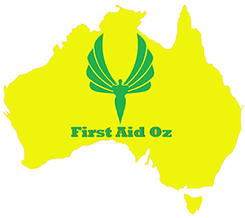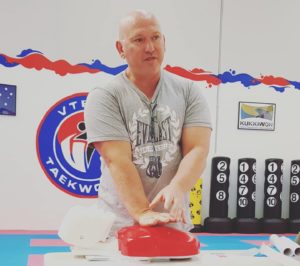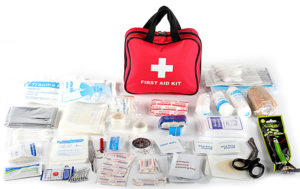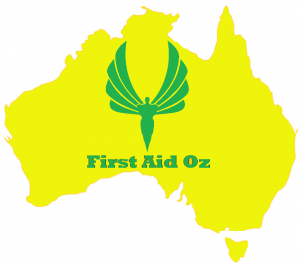Preventing Drownings this Summer
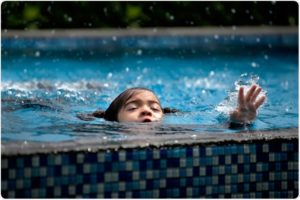
As Australians, we all have memories of swimming lessons. Whether we learned with our families, at school or in private classes, many of us learned to swim as children and teenagers. However, the ability to swim when a child gives many people a false sense of security against preventing drownings.
Many drownings occur in the backyard pools and spas, and most of these are young children. Children must be supervised whenever around water at home. Check your home for water dangers and consider all hazards such as buckets, open drains and water fountains.
Buckets, bathtubs, eskies (coolers), water fountains and features, fishponds, drains, inflatable pools, water tanks and even pet bowls all pose a significant drowning risk especially to younger children.
It is crucial that these are emptied, covered, put away and not left where they can fill up with water. Inflatable pools should be emptied after use and stored securely out of reach of children.
A toddler or child can drown in only 5 cms of water. Every exposed water source poses a significant danger.
Most toddler drowning deaths occur when parents’ attention is divided. Everyday household tasks such as attending to other siblings, preparing meals, answering the front door and phone calls are just a few of the many distractions that can interfere with supervision.
Teaching children water safety skills is an important step in ensuring they grow up to become confident around water, and will go a long way to help preventing drownings. Familiarize children with water by enrolling them in water awareness classes, spending time with them in the water and establishing basic water safety rules. (Royal Life Saving, Australia)
There are several health and safety factors that play a part in both preventing drownings and non-fatal near drownings. In this article, we discuss some sobering summer statistics and what YOU can do to help save a life this summer, maybe even your own.
Water safety around backyard pools and spas
To reduce the risk of your child drowning in the backyard pool:
Install a fence – pool fencing is required by law for any swimming pool or spa in excess of 300 mm (30 cm) in depth – and it must be maintained for the life of the pool or spa. Pool fencing must comply with the Australian Standard AS1926. Your local council can provide information on pool fencing laws.
Regularly check that the safety latch on the gate is in good working order.
Clear surrounding area – don’t leave any items or equipment close to the pool fence that would allow your child to climb up and over the fence.
Pack toys away – don’t leave floating toys in the pool or your child may try to reach for them.
Tip out water – empty wading pools immediately after use.
Check your surroundings – when visiting other people’s houses, ask whether the owners have a pool, spa, pond or other body of exposed water on their land, or not. From Better Health
Swimming skills alone don’t guarantee us from preventing drownings. Unfortunately, not everyone knows how to swim well in non-pool conditions, such as the ocean, surf beach or flowing rivers.
These environments present a lot more hazards than your local heated pool, such as currents, waves, rips, submerged objects, temperature, and varying depth.
Some Other safety rules to follow:
- Never swim alone!
- Always swim where a lifeguard can see you and in areas that are marked for swimmers to use.
- Don’t swim out too far.
- Never pretend to be drowning. The lifeguard may take you seriously.
- Don’t swim close to piers — those big, wooden structures that jut out into the water. If the water moves suddenly, you could hit a piling or a rock.
- Face the waves, instead of turning your back on them. Then you’ll know what’s coming.
The Value of Public Swimming Pools in preventing drownings
A report from Royal Lifesaving found that the increasing physical inactivity among the Australian population is causing a higher risk of drowning. Being physically inactive puts people at the risk of death and disability, leading to burdens on the Australian health care system.
Australian aquatic facilities provide people with the opportunity for safe, low impact physical activity and generates significant health benefits.
Royal Lifesaving found:
- Nearly 40% of the population is classified as physically inactive according to the World Health Organization
- Insufficient physical activity is responsible for 5% of all death and disability in Australia
- The average Australia visits a public pool 4.4 times a year
- A weekly visit to a pool is enough to take most people out of the physically inactive category
The importance of Learning First Aid and CPR
First Aid Courses
It’s well known that bystanders are often the first people available to help a drowning victim, especially a child. As a result, knowing CPR is invaluable. It is important to not only get First Aid certified but to keep your certification current. More important than the certification, however, are the skills, knowledge and confidence gained by attending a First Aid Course.
In an emergency, every minute counts. Remember, your efforts are instrumental in helping to keep a person alive until paramedics arrive.
So here are the top 6 important reasons why you need to learn CPR
1: CPR Keeps a Person Alive Until Help Arrives
Once a person’s heart stops beating, there is only 3-4 minutes before they become brain dead. As a result, CPR helps keep a person alive by delivering oxygen, via breaths into the mouth, and circulating blood via chest compressions. However, CPR is most effective when done as soon as possible.
2: Chest Compressions are Incredibly Important
As we all know, oxygen is vital to stay alive. Mouth to mouth resuscitation delivers oxygen straight to the person via CPR. You only have minutes before delivering oxygen becomes crucial. CPR helps keep the brain alive by circulating oxygen via chest compressions.
3: Defibrillators are More Effective than CPR alone
A defibrillator attempts to restore the heart’s natural rhythm by delivering an electric shock to the heart. These are commonly found in shopping centres, schools, community centres, sports clubs, gyms, etc.
Because they can shock the heart, they are more effective than chest compressions alone. As a result, attending first aid and CPR courses are vital as they can give you the necessary skills to train in how to use a defibrillator.
4: CPR won’t hurt Someone
Distressingly, 40% of people have said that they are not comfortable in their ability to deliver CPR. And 1 in 10 people would not perform CPR on someone they knew, due to lack of ability. If a person stops breathing, CPR can mean the difference between life and death.
As a result, it is best to attempt CPR even if you’re unsure it will work. While there is no guarantee the person will survive, CPR absolutely improves their chances.
5: Always call 000 in an emergency
In the ideal emergency situation, you won’t be alone. You will at least have someone to call emergency services while you begin CPR. Even better, you’ll have someone who can take over from you if you get tired.
However, if you’re alone, you need to call emergency services before you begin CPR or have them on speaker phone as you are performing CPR. Once you begin CPR you cannot stop until emergency services arrive.
6: First Aid and CPR Saves Lives
It’s difficult to learn a skill simply by reading about it. The best way to be competent and confident in CPR and first aid is to take courses and ensure you always refresh your skills. Early CPR contributes to greater survival rates, with four times as many positive health outcomes.
Furthermore, children are also four times more likely to survive near drowning if their parents or a bystander knows CPR and it is performed immediately. Any CPR attempt is better, which is why everyone should learn CPR, especially new parents.
First Aid Kits for Summer Activities
Finally, learning first aid is vital in Australia – especially during the summer months. Spending time outdoors for work or recreation exposes us all to a wide range of first aid emergencies. So having training in first aid and owning a kit ensures you are well equipped to deal with emergencies as they arise.
Taking a first aid course will give you the knowledge to make the best possible use of the contents of your first aid kit.
Australia has more than its fair share of hazardous creatures. These include snakes, spiders, venomous sea creatures, tics and birds. In fact, there have already been 655 magpie attacks across Australia this year.
Accidents can also occur while walking, hiking, cycling, running, swimming, surfing, garden, in fact any outdoor activity can result in an accident, including barbecuing.
First aid courses cover everything from bites and stings, sunburns and fire burns, hyperthermia and heat exhaustion, dehydration, allergic reactions, and the signs, symptoms and treatments of all of these.
Furthermore, they provide hands-on, practical scenarios with an opportunity to practice with it contents.
Our Top 4 Summer Tips
To enjoy this Summer safely with your friends, remember our top 4 tips.
1: Learn First Aid and CPR
The practical lessons and refresher sessions provide important instructions and life skills that may save a life. Furthermore, having high quality, standardized training gives you the confidence to step in and help during an emergency.
It is important to have a first aid kit that is fully stocked. Appropriate supplies for an Australian first aid kit include supplies to disinfect, soothe and protect bites, burns and wounds, gauze, tape, bandages, scissors, tweezers, safety pins, ice packs, disposable non-latex gloves, antiseptic wipes and emergency phone numbers.
3: Enjoy the Heat Safely and Practice Responsible Alcohol Use
Pay close attention to the heat and heat-related illnesses. Signs of heat exhaustion include very pale or red skin, dizziness, nausea, moist skin, weakness, exhaustion, and normal or raised body temperature. Further, alcohol and water don’t mix.
If you’re going to drink, stay away from the water and don’t operate any water-based vehicles. Remember driving a boat has the same restrictions as driving a car – you must have a blood alcohol level below 0.04.
4: Make Sure Your Pool Fence is Compliant
Enjoying lazing pool side is part of the Australian dream during Summer. However, home pools create one of the highest risks of drowning. This is especially true of children under 5. Ensure your pool meets the safety requirements laid out each year and always supervise children, family and friends around the water.
Knowing what to do in an emergency can make the difference between life and death. So why not invest in a CPR or first aid course and be safe in the knowledge that you can help protect your friends and family this year.


